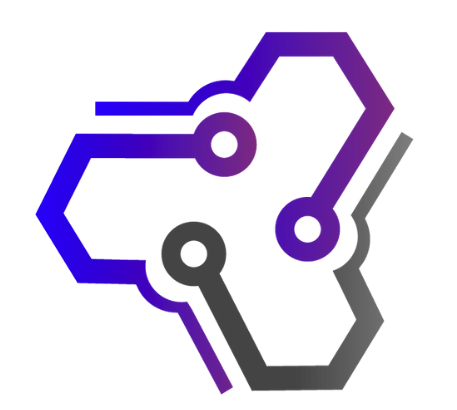Welcome to our article on the fascinating debate between prescriptivism and descriptivism in linguistics. In this discussion, we will explore how these contrasting approaches shape language ideologies, rules, and usage. So, let’s dive in and uncover the key differences between prescriptivism and descriptivism.

Key Takeaways:
- Prescriptivism and descriptivism are two approaches in linguistics that focus on language ideologies and usage.
- Prescriptivism seeks to establish rules and norms for correct language usage, while descriptivism describes and analyzes the actual language used by speakers.
- The debate between prescriptivism and descriptivism informs our understanding of language and its evolution.
- Language rules and norms coexist with linguistic variation and natural language change.
- Understanding the nuances of this debate helps us strike a balance in language usage.
The Concept of Prescriptivism
Prescriptivism is an approach to language that seeks to set rules and guidelines for what is considered “good” or “correct” usage. It involves establishing language norms and prescribing specific ways of using language. This concept is influenced by linguistic philosophy and often addresses issues of language variation, aiming to create a standardized form of language that adheres to certain rules.
Prescriptivism recognizes the importance of maintaining consistency and clarity in language. It emphasizes the idea that language should follow established conventions and norms, ensuring effective communication among speakers. By prescribing rules for language usage, prescriptivism aims to uphold linguistic standards and prevent the erosion of language over time.
However, prescriptivism has its limitations as well. While it provides structure and guidelines, it may not fully capture the complexity and diversity of language. Language variation is inherent, and different communities have their own unique language patterns and dialects. Prescriptivism may overlook these variations and impose a one-size-fits-all approach, potentially neglecting the richness and cultural significance of diverse language use.
The Concept of Descriptivism
Descriptivism is an evidence-based approach to understanding language, rooted in descriptive linguistics. Unlike prescriptivism, which seeks to establish rules and norms for language usage, descriptivism focuses on describing and analyzing how language is actually used by speakers. This approach recognizes that language is a dynamic system that evolves naturally over time and varies among different speech communities.
Descriptive linguistics, the foundation of descriptivism, involves studying language variation and usage patterns. Linguists who adopt a descriptivist perspective aim to accurately describe language as it is, without making value judgments about whether it is “correct” or “incorrect.” They focus on capturing the intricacies and complexities of language, including dialects, regional variations, and linguistic diversity.
“Language is a living organism, constantly evolving and adapting to the needs of its speakers.”
By embracing descriptivism, linguists can gain valuable insights into how language functions and evolves. They can analyze language data to uncover patterns, identify changes over time, and understand the social and cultural factors that influence language use. Descriptivism also highlights the importance of linguistic diversity, recognizing that different speech communities may have their own unique language patterns that are equally valid.
The Role of Descriptivism in Language Study
Descriptivism plays a crucial role in advancing our understanding of language. By adopting an evidence-based approach and focusing on language as it is used naturally, linguists can contribute to various fields, including sociolinguistics, psycholinguistics, and historical linguistics. Descriptive studies provide valuable data that can inform language policies, educational practices, and our overall appreciation of linguistic diversity.
| Descriptivism | Prescriptivism |
|---|---|
| Emphasizes language as it is used naturally | Focuses on establishing rules and norms for language usage |
| Recognizes linguistic diversity and variation | Seeks to create a standardized form of language |
| Studies language data to uncover patterns and changes | Enforces language rules and attempts language reform |
Overall, descriptivism offers a comprehensive approach to studying language, acknowledging its dynamic nature and embracing the diversity of its usage. By understanding language as it is spoken and appreciating the rich tapestry of linguistic variation, we can gain a deeper insight into the intricacies of human communication.
Historical Perspectives on Prescriptivism
In the realm of language governance and reforms, one prominent figure stands out in the history of prescriptivism – Samuel Johnson. Johnson, an English writer and lexicographer, recognized the ever-changing nature of language and sought to establish standardization through his influential dictionary, A Dictionary of the English Language. Published in 1755, this monumental work aimed to provide a comprehensive and authoritative guide to the English language, codifying rules and norms for correct usage.
However, Johnson’s efforts, although commendable, faced challenges in imposing fixed language standards on a fluid and evolving linguistic landscape. Language, by its very nature, is dynamic, influenced by social, historical, and cultural factors, making it resistant to rigid enforcement of rules and regulations.
Despite the difficulties in maintaining language governance and reform, Johnson’s dictionary remains a significant milestone in linguistic history. It marked an important shift towards prescriptivist approaches to language, emphasizing the need for standardization and defining “good” usage. However, as language continues to evolve, the idea of a fixed standard becomes increasingly elusive.
| Reform Movement | Year | Main Focus |
|---|---|---|
| French Academy | 1634 | Standardizing French |
| Mandarin Promotion Council | 1913 | Promoting Mandarin in China |
| Academy of the Arabic Language | 1875 | Standardizing Arabic |
Table 4 showcases notable language reform movements throughout history. These initiatives aimed to establish language norms and regulate linguistic practices. However, despite their intentions, language remains a constantly evolving entity that is shaped by the diverse voices of its speakers.
Linguistic Challenges to Prescriptivism
Prescriptivism, as a linguistic ideology, faces several challenges in the field of linguistics. One of the main challenges is the recognition of language change. Linguists argue that language is a dynamic system that naturally evolves over time, and attempts to prescribe fixed rules may impede its natural course of development. Language change is a reflection of societal and cultural shifts, and it is essential to acknowledge and understand these changes to accurately describe and analyze language usage.
Linguistic diversity also poses a significant challenge to prescriptivism. Language is not a monolithic entity, but rather varies across different regions, communities, and social groups. Each language variation carries its own unique linguistic patterns, which may deviate from the prescribed norms. Embracing linguistic diversity is crucial for a comprehensive understanding of language and to respect and value the diverse linguistic practices of various communities.
“Language is constantly changing, and attempts to enforce rigid rules are akin to trying to stop the tide from coming in.”
Linguists argue that prescriptivism fails to account for the organic nature of language and its innate tendency to evolve. By focusing on prescriptive norms, the richness and complexity of language variation and change are often overlooked. Instead, adopting a descriptivist perspective allows linguists to accurately document and analyze language usage, providing a more nuanced understanding of how language operates in different contexts.
| Prescriptivism | Descriptivism | |
|---|---|---|
| Concept | Establishes fixed rules and norms for language usage | Describes and analyzes actual language use |
| Approach | Value-based | Evidence-based |
| Perspective | Language should adhere to prescribed rules | Language should be observed and understood as it is |
Overall, the challenges posed by linguistic change and diversity challenge the notion of prescriptivism as the sole authority on language usage. Embracing a descriptivist perspective allows for a more inclusive and accurate understanding of language, recognizing its inherent dynamism and variability.
Language Use Today: Balancing Norms and Variation
In today’s language use, there is a delicate balance between adhering to prescriptivist language norms and embracing linguistic variation. While the field of linguistics leans towards descriptivism, prescriptivist elements still persist in various forms such as style guides, online forums, and parental corrections. This ongoing debate in language use highlights the tension between standardized rules and the natural evolution and diversity of language.
Style guides play a significant role in shaping language usage by providing guidelines for writing and communication. They offer prescriptive rules on grammar, punctuation, and style to ensure clarity and consistency. Many individuals, particularly those in academic and professional settings, rely on style guides to conform to established standards. However, it is important to recognize that language is dynamic and constantly evolving, and a strict prescriptivist approach may stifle linguistic creativity and hinder the adaptation of language to suit new contexts and modes of communication.
On the other hand, linguistic variation and diversity challenge the notion of strict language norms. Different communities and regions have their own unique language patterns and dialects, reflecting the rich tapestry of human linguistic expression. Embracing this linguistic diversity acknowledges the cultural and social contexts in which language is used. It promotes inclusivity and allows for a more nuanced understanding of different linguistic practices. However, this does not negate the importance of effective communication and the need for shared language norms that facilitate mutual understanding.
In conclusion, the debate between prescriptivism and descriptivism continues to shape language use today. While prescriptivist elements persist in the form of style guides and other prescriptive practices, linguistic diversity and the recognition of language as a dynamic system challenge rigid language norms. Striking a balance between adhering to basic language rules and embracing linguistic variation allows for both effective communication and the celebration of the diverse ways in which language is used.
Table: Examples of Language Norms and Linguistic Variation
| Language Norms | Linguistic Variation |
|---|---|
| Use of formal language in academic writing | Use of slang or colloquial expressions in informal conversations |
| Standardized grammar rules in professional communication | Dialectal variations in pronunciation and grammar |
| Prescribed spelling and punctuation conventions | Alternate spellings and punctuation choices in different dialects |
Conclusion
Prescriptivism versus descriptivism is an ongoing linguistic debate that significantly impacts our language usage. Prescriptivism aims to establish rules and norms for correct language usage, while descriptivism focuses on describing and analyzing the language as it is used by speakers.
This debate is crucial in understanding the complexities of language and how it evolves. While prescriptivism provides a framework for standardized language, descriptivism recognizes the natural evolution and variation of language over time.
It is important to strike a balance between adhering to language norms and embracing linguistic variation. This balance ensures that language remains dynamic and reflective of diverse communities. By understanding the nuances of this debate, we can better navigate the linguistic landscape and appreciate the intricate nature of language usage.
FAQ
What is prescriptivism?
Prescriptivism is an approach to language that seeks to establish rules and norms for correct language usage, prescribing specific ways of using language.
What is descriptivism?
Descriptivism is an evidence-based approach to language that describes and analyzes how language is actually used by speakers, without making value judgments about correctness.
Who is Samuel Johnson?
Samuel Johnson is a prominent figure in the history of prescriptivism, known for his authorship of a dictionary and recognition of the volatility of language.
Why do linguists challenge prescriptivism?
Linguists argue that language is a dynamic system that naturally evolves over time, and attempts to prescribe fixed rules may impede the natural course of language change. Linguistic diversity is also a key aspect that challenges prescriptivism.
How do prescriptivism and descriptivism coexist in language use today?
Most academic linguists adopt a descriptivist approach, but prescriptivist elements still exist in various forms such as style guides, internet forums, and parental corrections. The tension between adhering to language norms and embracing language variation is an ongoing debate in language use today.
How does understanding the prescriptivism vs descriptivism debate inform our understanding of language?
Understanding this debate allows us to recognize the merits and limitations of both approaches, and helps us strike a balance between adhering to language norms and acknowledging the natural evolution and variation of language.

![Ray Dalio Quotes [Principles, Life, Investment]](https://tagvault.org/wp-content/uploads/2023/04/Screen-Shot-2023-04-19-at-7.57.49-PM.png)